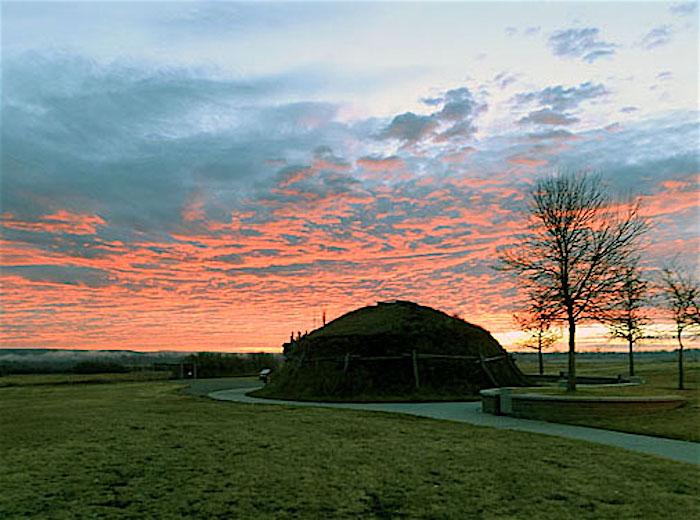
Present-day Fort Union Trading Post National Historic Site/NPS
If The Revenant, Leonardo DiCaprio's early 19th century story of surviving a grizzly bear attack on the Western frontier, caught your eye, then you might want to head to North Dakota this summer to see part of the landscape that his character, Hugh Glass, crossed in his search for retribution.
Glass was a mountain man who in 1823 answers a call to join the Andrew Henry-William Ashley fur company on a trapping expedition up the Missouri River. As the story goes, Glass was mauled within an inch of his life by a grizzly sow that he managed to kill before collapsing.
While two men -- Jim Fitzgerald and possibly a young Jim Bridger -- volunteered to remain with Glass until he died so that he might receive a proper burial, Glass refused to die. But Fitzgerald and Bridger didn't wait around to see that. Fearful of being attacked by Indians, they took Glass's belongings, including his rifle and knife, and headed off after the expedition.
Glass, miraculously not only survives the mauling, but manages to cover some 200 miles -- first by crawling, then walking with the aid of a crutch, and finally by raft or Indian canoe -- to Fort Kiowa farther south on the Missouri River.
After recouping a bit and getting outfitted at the fort's trading post, Glass heads back north in search of Fitzgerald and Bridger to gain revenge. One long leg of the journey north takes Glass from Fort Tilton on the Missouri River noth of present-day Bismarck, North Dakota, to Fort Henry at the confluence of the Yellowstone and Missouri rivers in far northwestern Montana. Fort Henry, built in 1822, was the precursor to Fort Union, built in 1828; it went on to become one of the busiest trading posts in the Upper Missouri region, according to the National Park Service.

"Fort Union on the Missouri" by Karl Bodmer, a Swiss artist who traveled up the Missouri River with Prince Maximilian of Wied in the summer of 1833. Sketches Bodmer made at the time of the fort and the Assiniboine people became the basis for this later print./A lithographic print of "Fort Union on the Missouri" published circa 1843 (FOUS 2761). NPS
By the time Glass reached Fort Henry, though, Andrew Henry and the men in his party had abandoned it and headed west to a new location on the Big Horn River near present-day Billings, Montana.
The fort you find today at Fort Union Trading Post National Historic Site is a replica, built in the 1970s and '80s, and is said to provide a fairly accurate recreation of the original fort.
If you do head to North Dakota to see the fort, you might also stop by Knife River Indian Villages National Historic Site near present-day Stanton, N.D., too. On his trip back north after recovering from the bear attack Glass had gone ashore from a keel boat he was riding in shortly before it was attacked by Indians. He sought safety at a nearby Mandan Village, which likely was either on, or very near, the site of today's Knife River Indian Villages park.

An earthlodge at Knife River Indian Villages National Historic Site/NPS




Comments
I visited Fort Union, Knife River and Theodore Roosevelt NP in October of 2015. All three were fabulous!
I loved that part of the world when I visited it in June of 2012, but there's no way I could sit through The Revenant, no matter how interesting the historical aspect, the same way I'd never have made it through the beginning of Saving Private Ryan. I love historical movies, but not that much gore and/or violence, no matter how historically accurate, alas.
It is a fabulous historical based movie - you should try to go. Go with some friends, do not miss it!
What my husband and I got out the movie, other than enjoying gorgeos scenery, was the graphic demonstrations of the 5 Basic Necessities to Sustain Life. We are backpackers and had recently taken Wilderness Survival courses. The 5 Basic Necessities are: 1) WILL TO LIVE 2) Shelter 3) Fire 4) Water 5) Food; in that order! See if you can identify these in the movie!
I love it